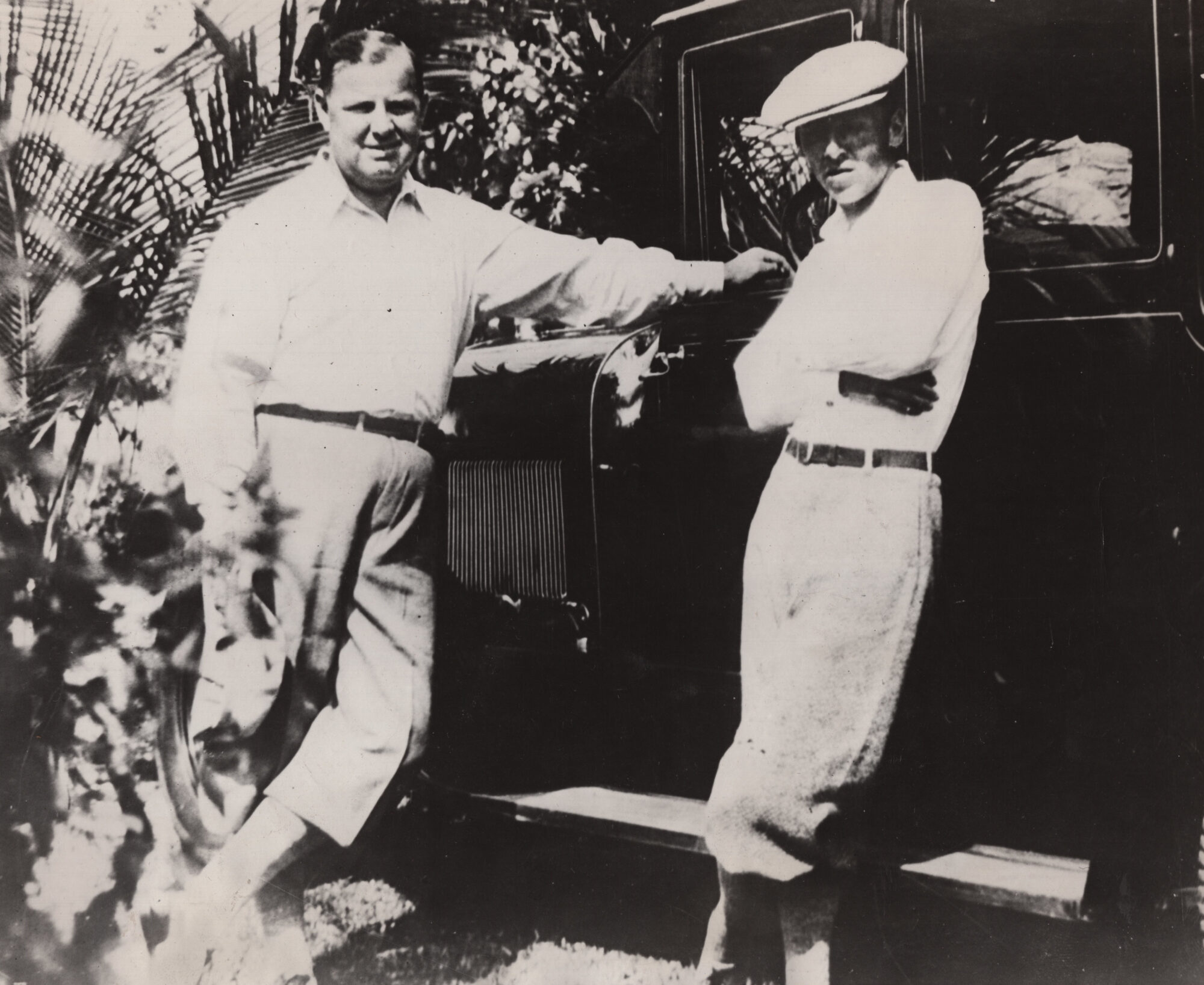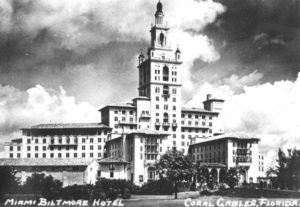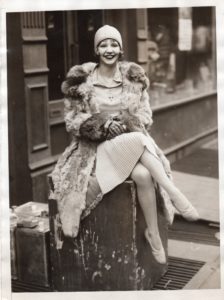Ninety years ago, Thomas ‘Fatty’ Walsh died as he lived — by the gun
Police never solved the mystery of who killed burly New York mobster in Florida

The setting was a suite on the 14th floor of the lavish Biltmore Hotel in Coral Gables, Florida. Thomas Walsh, former bodyguard of the late Arnold “The Big Bankroll” Rothstein, and Arthur L. Clark, alleged member of the Jack “Legs” Diamond gang, were among the gamblers, gangsters and showgirls having a grand time playing games of chance.
The entire floor — an illicit gambling den frequented by underworld high-rollers — had not been subject to any overt violence until the early-morning hours of March 7, 1929. Then, after an exchange of words, multiple gunshots rang out, and blood spilled upon the green baize bridge tables. Attendees fled as law enforcement rushed in to find two men down, one dead, the other wounded. A few patrons evaded apprehension, while police hauled others to headquarters for questioning. Nobody volunteered much info, leaving investigators scrambling to I.D. the deceased.
A search of the dead man’s clothing revealed a sewn-in tag that read “Tom Walsh.” To validate the victim was indeed the notorious New York mobster Thomas “Fatty” Walsh, police brought in Arthur “Chick” Clark to provide a positive identification. Clark, who bore non-life-threatening gunshot wounds to the arm and chest, was present during the melee. Nonetheless, he remained hesitant to divulge much beyond a positive I.D. of Walsh. At one point, he said he believed the shooters had targeted Walsh, only to later claim: “I don’t know anything about it” and “you won’t get anything out of me. I don’t think they were shooting at Fatty at all.” By daylight, the authorities had a jail cell full of alleged witnesses, the victim’s identity, but little else in terms of evidence.
So, who was Thomas “Fatty” Walsh? From New York City to Miami, the boisterous, burly and abrasive mobster ran with the notorious Diamond Brothers Gang, protected the infamous financier Arnold Rothstein, and liked to shoot dice with a soon-to-be-crowned Mob kingpin, Charles “Lucky” Luciano. Walsh rubbed elbows with many of the up-and-coming gangland gods, and his eight previous arrests since 1914 (with only two convictions) earned him quite a reputation within both underworld and law enforcement circles. He often vacationed and held interests in the balmy, palm tree-adorned Southern regions, not to mention Cuba and other islands from which bootlegged liquor shipments flowed.
Walsh had his hands into everything from booze to dope, but his association with Arnold Rothstein gave rise to his notoriety. Questioned by police, along with Luciano and George Uffner, about the November 6, 1928, murder of Rothstein, Walsh denied any involvement. He emphatically stated that he quit working for Rothstein months before, because “Rothstein was too cheap. He wouldn’t pay his bills.” As with the slaying of Rothstein, police never truly solved Walsh’s murder, which included a few of the same mysterious characters.
Police departments working jointly began piecing together the puzzle of Walsh’s murder, but every clue or suspect that materialized seemed to add to the mystery and possible theories. Several suspects received particular attention, including gamblers William Wallace and Bert Griffith, but the primary person of interest was the man who operated the gambling suite where the murder occurred — Eddie Wilson.

Word circulated that Wilson had fled to Cuba and that the actual shooter was a hitman known as “Potatoes” Joe Piteo, also rumored to have escaped to Cuba. Even Al Capone’s name arose in the early stages of investigation. Adding to the spectacle, the day after Walsh’s murder, a lawyer named Fred Pine burst into the county jail, requesting the names of all the people in custody. When police asked what incident he was referring to, Pine elusively replied, “I’m here for anyone you have got and I want to see him.” Turns out Pine arrived there on a “blanket assignment” from an anonymous client to represent anyone hauled in for the Walsh murder.
Investigators also discovered another character reportedly at the murder scene — a young New York nightclub hostess/entertainer named Demaris “Hotsy-Totsy” Dore. Cops found Dore hiding out in New York. She admitted to witnessing the shooting that killed Walsh. Dore claimed that the shooter, who spoke with a lisp, fired the shots after Walsh teased the man’s way of speaking. Yet Dore refused to identify the man, saying that he had threatened her. At one point, she blurted, “You’ll get nothing out of me. They’ll kill me!”
But on March 13, New York Police released a statement that Dore had named Eddie Wilson as the shooter. Dore told police that Walsh owed Wilson a gambling debt of $8,000. When the two men spoke while playing cards in the Biltmore suite, Walsh listened to Wilson’s complaints about the debt, then mocked Wilson’s lisp. The incensed Wilson shot Walsh and ran away. A rumor circulated that corrupt local cops facilitated Wilson’s escape to Cuba, the go-to spot for American criminals fleeing prosecution in that era.
Still, in the days and weeks after Walsh’s death, much conjecture circulated. Two theories emerged — one connected the murder to Rothstein’s murder in New York three months earlier, and another claimed Walsh got whacked over a bootleg liquor deal gone awry. To the latter, memos from agents in Havana revealed that a recent shipment of rye whiskey aboard the schooner Trey Reyes, destined for Nassau, was stolen and Walsh was one of three men behind the heist.
Soon after, an anonymous New York businessman came forward and admitted to authorities he gave Walsh $175,000 to buy the illegal booze, but the liquor never materialized. According to news reports, Walsh’s gang had the shipment robbed and then resold the liquor, leaving the New Yorker out of his $175,000 investment.

Investigators also discovered another witness to Walsh’s murder was none other than Rothstein’s former mistress, Inez Norton. She, along with Demaris Dore, fled the scene before cops arrived. However, her presence, paired with rumors that Walsh himself often bragged, “I know all about who was out to get A.R,” gained momentum back in New York as a clue to Fatty’s murder. “We have detectives in Miami and we know there are racketeers there, a good many of them former associates of Rothstein,” Police Commissioner Grover Whalen said.
Whalen’s remarks were vague yet spoke volumes. Detectives had been conducting reconnaissance since Walsh arrived at his Ferdinand Street bungalow in Miami three weeks before his death. They hoped Walsh would lead them to Hymie Miller, a fugitive suspect in the Rothstein murder case.
With respect to both theories, an interesting anecdote appeared in a 1959 newspaper column. Syndicated columnist Westbrook Pegler recounted some notable memories of his late friend and colleague Bill “Willie” Corum, including a brief yet revealing incident in Miami in 1929 when they encountered Walsh just days before the gangster met the Grim Reaper.
“(Corum) and I were standing on a canal bank in the moonlight chatting harmlessly when shots were fired close by in the darkness on the other side. There were coarse cries and commotion in the shrubbery and suddenly the oleanders parted and a white figure shot out into space like a torpedo from the tube, hitting the scummy water with an enormous wave. The torpedo floundered heavily ashore just beneath us and clambered up the bank puffing and festooned with strands of seaweed. He paused a second to catch his footing and Willie said with enormous tact, ‘Hello, Fat. What’s new?’”
Police issued a warrant for the arrest of Eddie Wilson in Walsh’s murder, but nothing came of it. Even as detectives explored theories and vague statements from alleged witnesses, the final truth about Walsh’s murder remains a mystery.
A local funeral home guarded Walsh’s body until someone arranged to send it back to New York for internment. Just before the handers loaded his corpse onto a train bound for Manhattan, authorities permitted potential witness Arthur Clark to offer a final farewell to Walsh at the funeral home.
“He was shot down like a dog,” Clark groaned after viewing the corpse. “He never had a chance.”
On March 12, 1929, hundreds of mourners honored Walsh in a grand sendoff. The local press observed that a large ensemble of criminal types and plenty of law enforcement officers attended the elaborate funeral.
Christian Cipollini is an organized crime historian and the award-winning author and creator of the comic book series LUCKY, based on the true story of Charles “Lucky” Luciano. Go to www.ganglandlegends.com.
Feedback or questions? Email blog@themobmuseum.org





